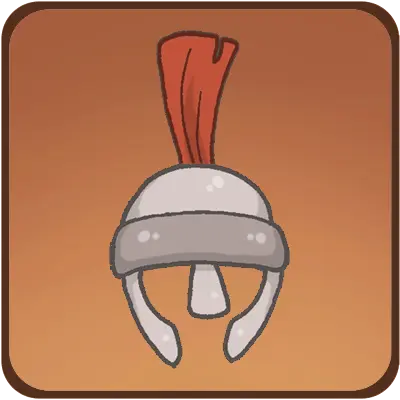This period begins approximately in the year 500 and ends approximately around the year 1000. The Middle Ages last until the year 1500. The part of history we discuss here is called the early Middle Ages. This is the time of the monks and knights.
In the year 476, the Western Roman Empire came to an end. The collapse of the Roman Empire changed a lot for the peasants. They were able to use Roman technology in the time of the Roman Empire. Now they had to save themselves. As a result, the harvest deteriorated and an average farming family had difficulty making ends meet. The trade also collapsed. The Roman money was no longer worth anything and people started bartering again.
The great area where the Romans once ruled was now crumbled. From the year 500 different kingdoms formed. One of the empires belonged to the Frankic King Clovis. In the eighth century this became a great kingdom in Western Europe. Charlemagne was then the emperor of this realm.
The king had divided his country into regions. In those regions, the king had placed a landlord. The landlord was allowed to rent the land to the farmers in exchange for protection. The farmers cultivated the land and gave their landlord a share of the harvest. We call this system a court system. The farmers are called horigen. Most people in the Netherlands from the early Middle Ages lived in the countryside. So they were horigen under a landlord.
So almost all people were part of this court system. The horigen, the lords and the king. Yet there were people who lived outside this court system. Some were free farmers. But there were also people who lived in monastic communities. They belonged to the church. The Catholic Church played an important role in this epoch. There were many monasteries in England and Ireland. In the Netherlands, the first monastery was built only after the early Middle Ages. Monks lived in these monasteries. These men devoted their whole lives to the church. This meant they weren't allowed to get married either. The monks filled their days with prayer and writing. For example, they copied Biblical texts. These texts decorated them with beautiful letters.
However, the oldest Dutch written text we know is not a Biblical text. This text begins with the words Hebban olla vogala. This was probably a romantic poem. The word hebban probably means have. Olla means all. Vogala means birds. It is thought that the translation of the complete sentence "Have all the birds nests begun except me and you. What are we waiting for now?" it is. But since this was written so long ago in history, of course we don't know the exact meaning for sure.
- The spread of Christianity in the Low CountriesDo you know what a missionary is? These people are trying to convert you. In the period of the Middle Ages there were many missionaries in the Netherlands.
- Court system and agilityDid you know that the Romans made many inventions to increase agricultural yields? After this period, the farmers had to reinvent everything themselves.
- The relationship between lord and vassalNowadays it is polite to call a man a 'gentleman'. In the past, few men were a gentleman.


